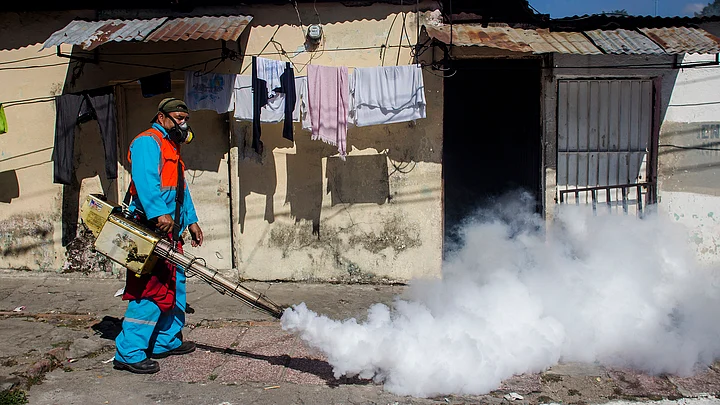The number of countries and territories in the Americas reporting cases of the mosquito-borne Zika virus rose to 22 on Tuesday, more than double the number from a month ago, according to the Pan American Health Organization (PAHO).
An outbreak of the virus is affecting large parts of Latin America and the Caribbean and is likely to spread to all countries in the Americas except for Canada and Chile, the World Health Organization (WHO) has said.
The virus was first identified in Uganda in 1947 and was unknown in the Americas until 2014. The disease is usually relatively mild but PAHO–the regional arm of the WHO said that it may be linked to cases of brain damage in newborn babies in Brazil.
Here are some facts about Zika:
1. The Zika virus spreads through the bite of an infected mosquito, the same mosquito that transmits dengue, chikungunya and yellow fever. There is no vaccine for Zika.
2. The Zika virus is usually relatively mild, with symptoms such as skin rash, fever, muscle and joint pain, lasting up to seven days. It is uncommon for people infected with Zika to need hospital treatment.
3. In the Americas, there is no evidence that the Zika virus can cause death, PAHO says, but sporadic cases have been reported of more serious complications in people with pre-existing diseases or conditions, causing death.
4. Researchers in Brazil and WHO say there is growing evidence that links Zika to microcephaly, a neurological disorder in which babies are born with smaller than normal heads and brains. But information about the possible transmission of Zika from infected mothers to babies during pregnancy or childbirth is “very limited”, PAHO says.
5. In northeast Brazil, there has been a marked increase in cases of newborn babies with microcephaly. Brazil’s health ministry has said the number of suspected cases of microcephaly in newborns increased in 10 days from about 360 to 3,893.
6. Brazil has the highest rate of infection, followed by Colombia. Zika outbreaks have also been reported in Ecuador, El Salvador, Guatemala, Haiti, Honduras, Mexico, Panama, Paraguay, Puerto Rico, Suriname and Venezuela, among others.
7. Colombia’s health ministry says Zika has already infected 13,500 people across the country and there could be as many as 700,000 cases this year.
8. In Colombia, it is estimated that 500 babies will be born with microcephaly, according to Colombian President Juan Manuel Santos.
9. Colombia’s health ministry has advised women to delay becoming pregnant for six to eight months to avoid possible risks related to the Zika virus.
10. Jamaica has not reported any confirmed cases of Zika, but the health ministry has recommended that women delay becoming pregnant for the next six to 12 months. El Salvador has advised women to avoid getting pregnant until 2018. 11.
11. Earlier this month, the US Center for Disease Control and Prevention warned pregnant women to avoid travelling to 14 countries and territories in Latin America and the Caribbean affected by the virus.
12. One in four people infected with Zika develop symptoms and many cases of Zika go undetected, making it difficult to estimate the true scale of the outbreak in the Americas. PAHO says there are no reliable estimates of the number of cases in the region. Based on reports from affected countries, PAHO estimates there are at least 60,000 suspected cases of Zika, though the real figure is thought to be far higher.
(Sources: World Health Organization (WHO), Pan American Health Organization (PAHO), Centers for Disease and Control Prevention (CDC), Colombian Ministry of Health)
(This story first appeared on Reuters)
(At The Quint, we question everything. Play an active role in shaping our journalism by becoming a member today.)
